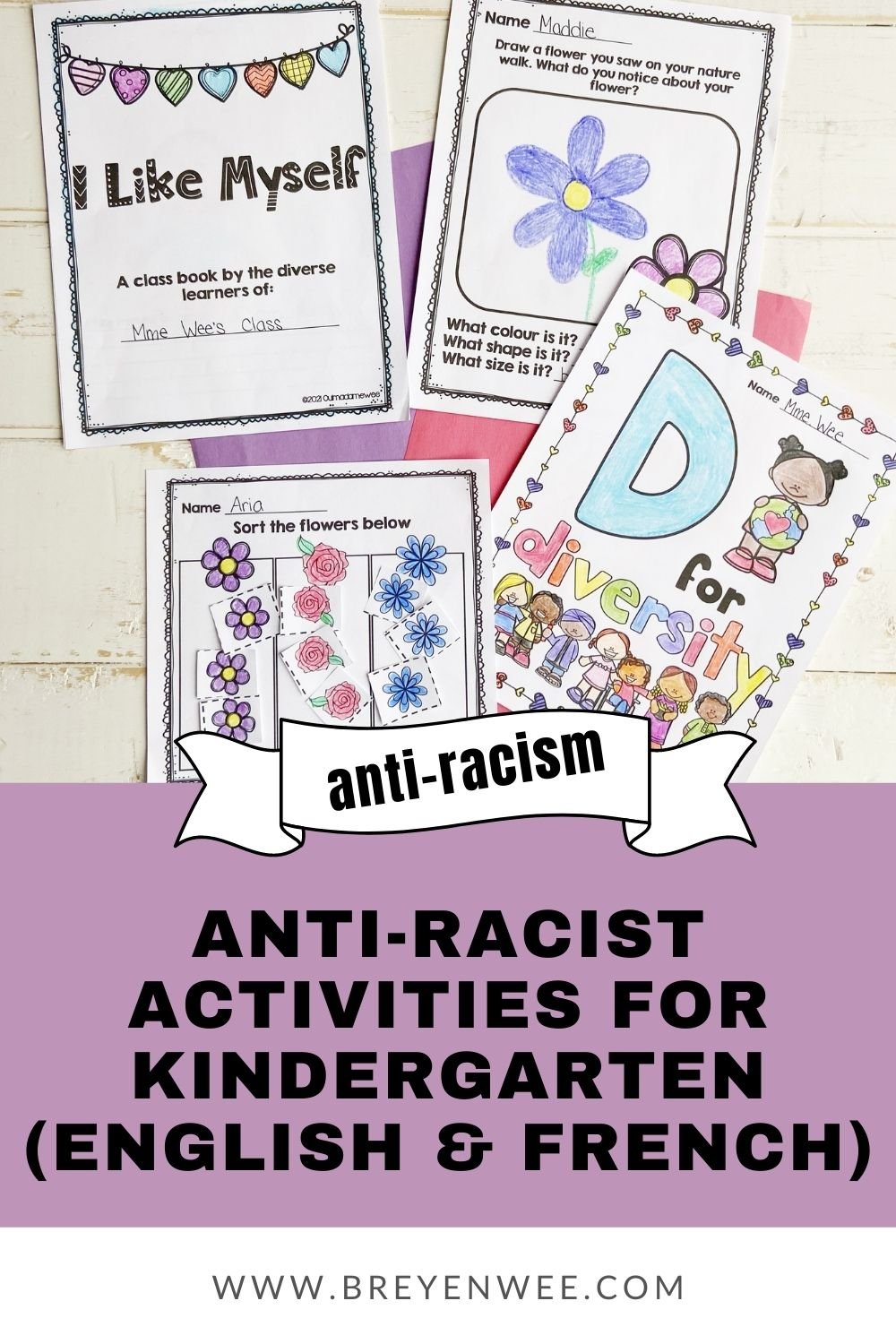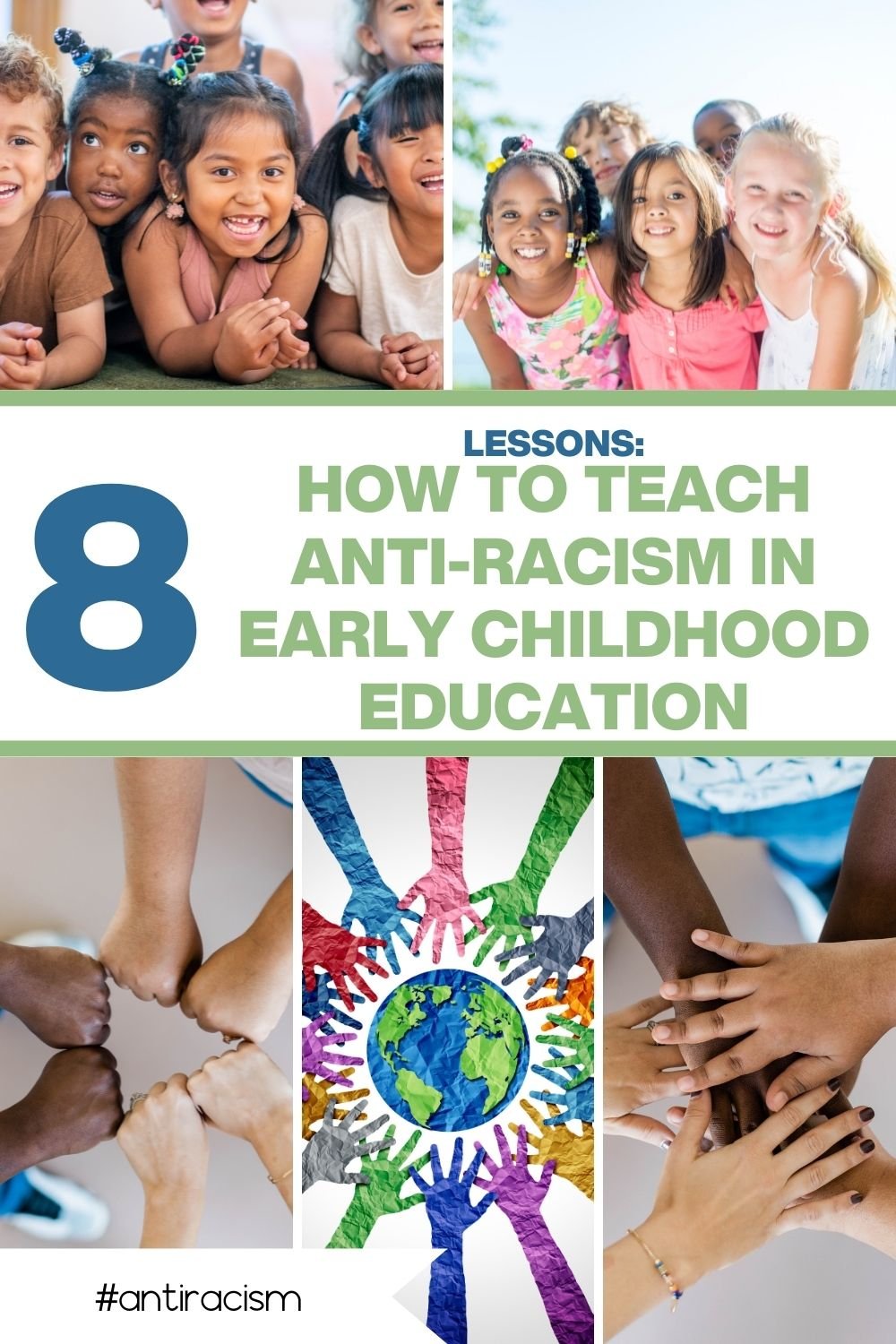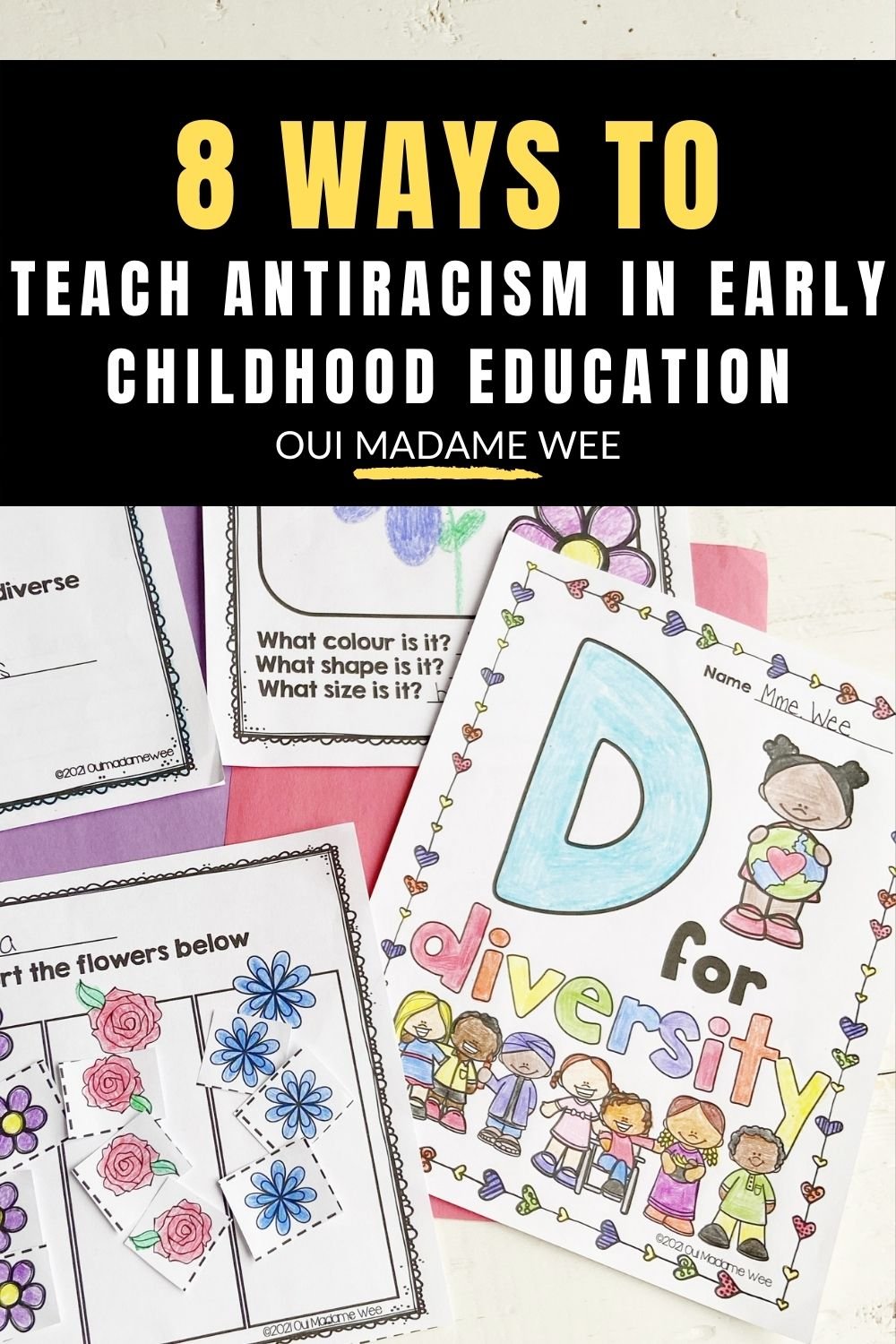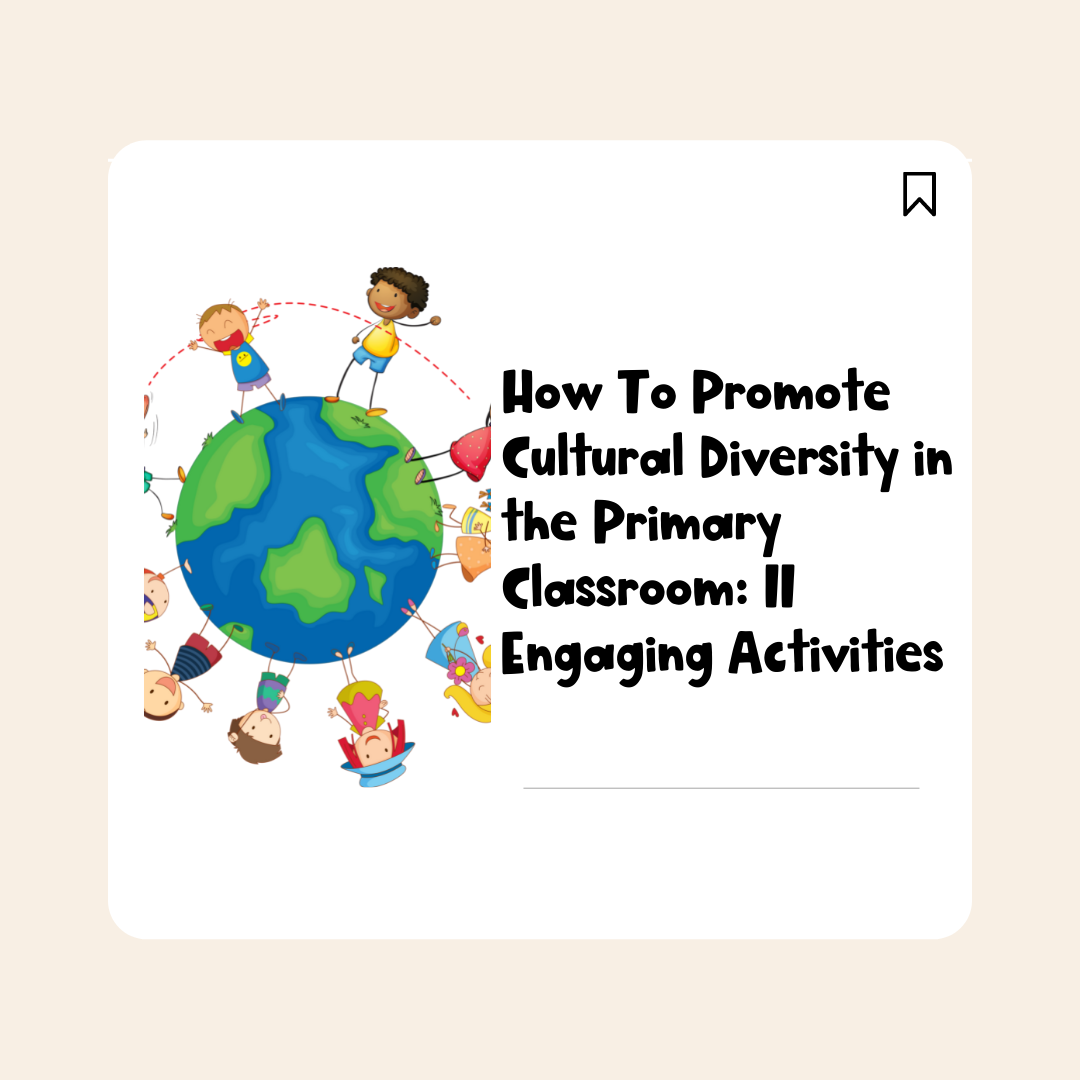How to teach anti-racism in Early Childhood Education
An outline of 8 easy lessons you can use in your Kindergarten or Grade 1 class to teach anti-racism. We’ll start by talking about diversity and how our differences make us unique and special and learn to celebrate these differences through discussion, song and books.
Why it’s important to talk about race in Early Childhood classrooms
You don’t need to wait until your child asks about race. Children are already noticing differences between themselves and their peers and people they see in the community. They notice when someone has a different colour skin or hair than their own, they notice when someone has a school lunch that looks or smells different from their own and they notice when a peer wears clothing or headwear different than what they wear. Children are also more aware than you might think of current events.
In 2020 when George Floyd was killed, children in my Kindergarten class, in the suburbs of Vancouver, BC knew about it. Whether they heard about it from their parents, on the news, radio or on the playground they were talking about the fact that someone with dark skin was killed by people with lighter skin. They had questions. Lots of questions. Questions that I admit I was not ready to answer.
I knew I wanted to do something. I wanted to gently and age-appropriately start to teach them about race, ethnicity and racism but I didn’t know where to start.
That’s what sparked my interest in creating a unit for kids on diversity because I believe that when young children learn what diversity is and how our differences make us special, they will develop more empathy and (I hope) grow up to be anti-racist.
I also know that it used to be common for people to say they were “colorblind” meaning they don’t see colour, only people. That completely undermines the struggles that black people, indigenous people and so many other people of colour have experienced. It makes it easy to pretend that racial injustices no longer exist today.
If we don’t acknowledge our colour and we ignore how beautifully diverse we are, how can we hope to raise anti-racist children?
I’m going to walk you through a complete unit on diversity that I have created for early childhood classrooms. This unit it designed with a Kindergarten class in mind but can absolutely be modified for a preschool or a Grade 1 classroom. I’m going to walk you through 8 lesson you can teach your students about diversity.
You can find diversity conversation starters here.
How to teach about race and ethnicity
Getting administration on board with teaching about diversity
Before you begin teaching your students about diversity you want to ensure that your parents and administration are on board. It’s worth taking the time first to chat with admin to make sure they understand what content you will be covering and how you’ll be teaching anti-racism to their littlest students.
The best thing you can do here is to take a deep dive into your province or board’s social studies curriculum. Is there anything in there about ways that people and families differ and are same? Here you can go over physical characteristics as well as origin, clothing, food, holidays, personal preferences etc. Your curriculum might also have a part about personal and family traditions.
When you know your WHY behind teaching about diversity and when it’s backed by curriculum you have a pretty darn good chance of getting admin on board. Here’s a link to the BC Kindergarten Social Studies Curriculum and a link to the Ontario Kindergarten curriculum.
Getting parents on board with their children learning about diversity
I recommend sending home a newsletter to parents explaining what their child will be learning about. Tell them why you believe teaching about diversity is important and assure them that your lessons align with the local curriculum. Explain that you will start learning about diversity in a very general way and gradually get more specific.
I sent a newsletter out to my Grade 1 families this year and had many thankful responses! Parents were genuinely pleased that their littles would be learning about diversity. That makes my heart so happy!
anti-racism lessons for children
Ok so you’re like cool, Breyen! I really want to teach my class about diversity but what are the actual lessons I should teach? I got you. Here’s an overview of all 8 lessons in my diversity unit:
Lesson 1 - Intro to Social Justice Girl and Diversity
In this first lesson I use a character, Sophia (Social Justice Girl) to talk introduce the word diversity. We’ll talk about what it means, count how many syllables are in the word and do a colouring sheet that has the word “diversity” on it and cute cartoon pictures of children from around the world. I encourage the kids to use a variety of browns tones to colour the characters’ skin.
Lesson 2 - Diversity in Flowers
Lesson number 2 introduces the concept of diversity by looking at flowers. I show them photographs of all sorts of flowers. We compare their petals, their shapes and colours and talk about how each flower is unique. Then we talk about how each type of flower is different on the outside even though all of them have similar needs. They all need sunlight, water and soil to live. Then the kids do a cut-and-paste activity where they sort pictures of different flowers.
Lesson 3 - Finding Diversity on a Nature Walk
If you’re in BC or Ontario (probably lots of other places too!) outdoor education is HUGE! In this lesson I get the kids outside to look at flowers or leaves. Each child chooses their own flower or leaf and draws it in detail and then we compare our drawings. What kind of flower did you choose? What shape are its petals? What colour is it? This is a great time to reinforce that lots of things in nature look different from the outside but are similar or the same on the inside. You can use the leaves to make this nature butterfly leaf craft after.
Lesson 4 - Diversity in People: Our Physical Appearances
I show the children pictures of difference people around the world. We talk about how everyone has a difference face, difference skin and different hair. We come in all shapes and sizes just like flowers and leaves do in nature! Even though we look different we all need the same things in life. We all need food, water, love, shelter etc. In these lessons Sophia, Social Justice Girl goes along the journey with us and helps teach us about the new concepts. At this point, I have the students do some word work with the word “diversity.”
Lesson 5 - Book-based lesson: I Like Myself by Karen Beaumont
I read the story to my students and we have a discussion about why we love ourselves. I record the students responses and we make a class book about it. I love having class books in our classroom library! It creates a sense of community and the children love to go back and read them. Sometimes, especially during Women’s History month, I tie in books about important women in history. Get it girls!
Lesson 6 - Diversity Song
I wrote a little song about Diversity because I truly believe that teaching children that our differences make us special will bring them a bit closer to becoming welcoming, empathetic and (hopefully) anti-racist little people. I have them do a crown craft about diversity at this point too. I love a good crown craft in Kindergarten! Anybody else? In the Spring I make this nature crown craft with my kids.
Lesson 7 - Book-based Lesson: It’s Okay to be Different by Todd Parr
Todd Parr is everything am I right? In this lesson we read the book, “It’s Okay to be different,” and we have a class discussion about ways in which the students are different. Has someone lost a tooth? Does someone celebrate a holiday others don’t know about yet? Was someone born in a different country? Let’s celebrate these differences!
Here’s a list of my favourite books to read during Black history month. They reinforce the idea of self-compassion and celebrating our differences. I’m so thankful for the authors!
This is a great list of LGBTQ books for kids to share with your students as well.
Lesson 8 - Todd Parr Art Lesson
This is such a fun art lesson and so cute to display on your hallway bulletin board. Check out the preview file of the diversity Kindergarten/Grade 1 unit to see a photo of it!
Anti-racism lessons for Early Childhood Education
So you might now be like woohoo! I’m super ready to teach about diversity in my Kindergarten or Grade 1 classroom! I’ve given you the entire how-to of these lessons because I feel so strongly about supporting teachers teach anti-racism and I want to help.
But, if you’re feeling super busy and overwhelmed with planning and want the slides and printables done-for-you (that makes life so much simpler, doesn’t it?) You can head to my Diversity Unit for Kindergarten and Grade 1 on TPT and find the whole thing ready to go.
The curriculum connections are done and I’ve pulled out the appropriate pieces for each lesson, the letter to parents is ready to go, each lesson plan is detailed and comes with lesson extension ideas. The printable worksheets, crafts and art lessons are ready and I’ve even narrated each slide (in the voice of Sophia, Social Justice Girl, of course!).
The entire unit comes fully in French as well and is ready for your French Immersion or Francophone classroom.
Do you have questions about how you can implement this diversity/anti-racism unit in your classroom? Leave a comment and I’ll be sure to get back to you.
Peace and love,
-Breyen
Follow me on Instagram @ouimadamewee













